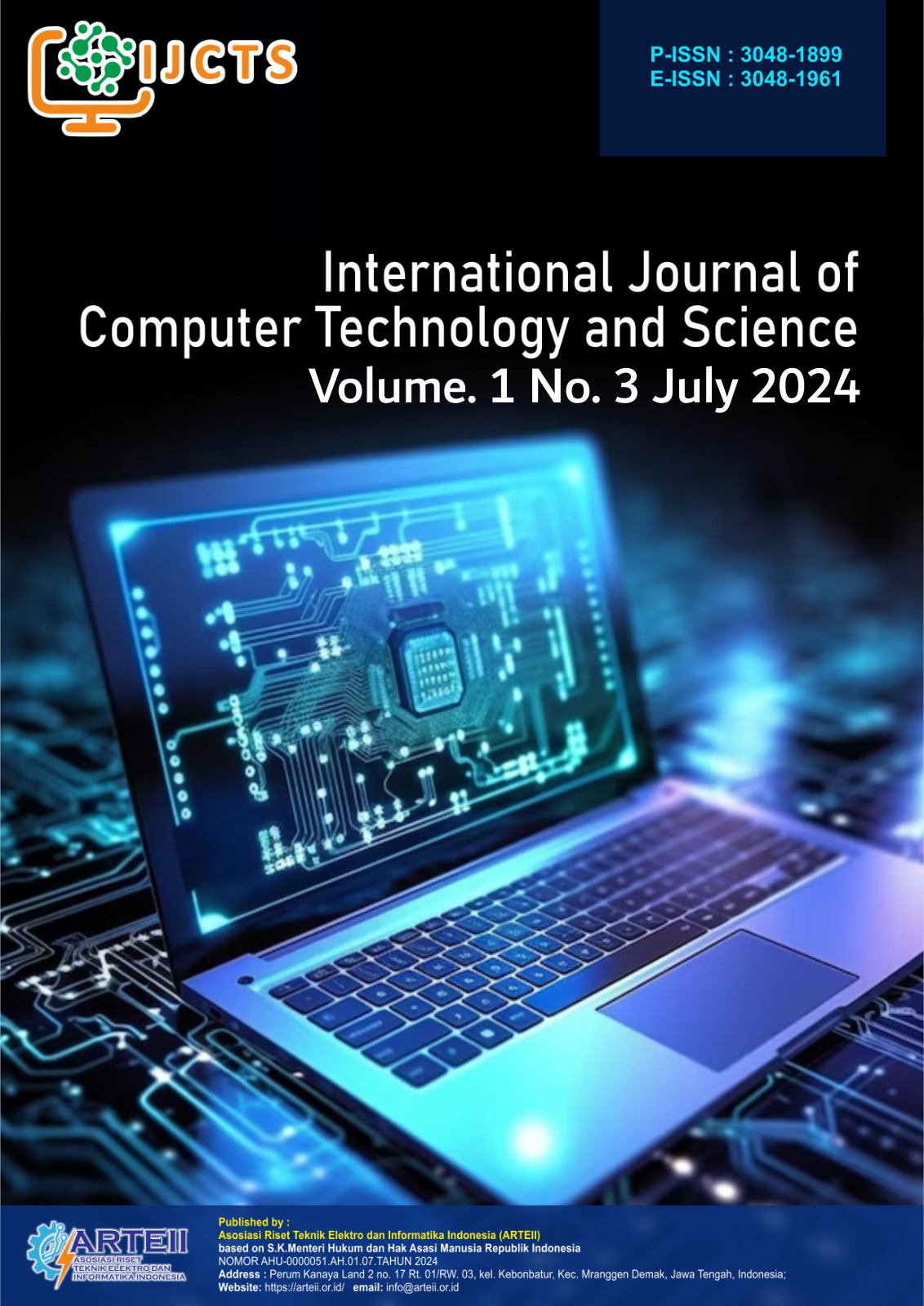Advancements in Multi-Factor Authentication: A Quantum-Resilient and Federated Approach for Enhanced Security
DOI:
https://doi.org/10.62951/ijcts.v1i3.26Keywords:
Quantum-Resilient Federated Multi-Factor Authentication, Industrial Internet of Things (IIoT) , Advances in Security AuthenticationAbstract
The Internet of Things (IoT) phenomenon is centered around linking various devices and objects to the Internet, enabling them to communicate, collect, and exchange data [1]. The IoT needs strong, lightweight, and secure authorization schemes to regulate many devices with varying levels of ability. Quantum-resilient federated Multi-Factor Authentication (QRF-MFA) is a solution presented in this paper to address the above-discussed issues. Featuring quantum-resistant cryptographic protocols, high-speed and low-energy Physically Unclonable Functions (PUFs), decentralized identity management, and optimized communication protocols, QRF-MFA provides a complete solution for secure cross-domain device identification and authentication. This is done by leveraging blockchain technology for immutable and transparent management of identities yet limiting on-chain storage overhead. It also provides secure, lightweight communication well-suited for resource constrained IIoT devices, and it is designed for fog and edge computing environments as well. QRF-MFA eliminates the challenges of current methods by combining security, efficiency, and scalability and delivering a resilient and future-ready solution to secure IIoT authentication.
References
Abubakar, M., Jaroucheh, Z., Al Dubai, A., & Liu, X. (2022). A Lightweight and User-centric Two-factor Authentication Mechanism for IoT Based on Blockchain and Smart Contract. In Proceedings - 2022 2nd International Conference of Smart Systems and Emerging Technologies, SMARTTECH 2022 (pp. 91–96). Institute of Electrical and Electronics Engineers Inc. https://doi.org/10.1109/SMARTTECH54121.2022.00032
Alanazi, M., & Aborokbah, M. (2022). Multifactor Authentication Approach on Internet of Things: Children’s Toys. In Proceedings of 2022 2nd International Conference on Computing and Information Technology, ICCIT 2022 (pp. 6–9). Institute of Electrical and Electronics Engineers Inc. https://doi.org/10.1109/ICCIT52419.2022.9711596
Aljanah, S., Zhang, N., & Tay, S. W. (n.d.). A Multi-factor Homomorphic Encryption Based Method for Authenticated Access to IoT Devices.
Alnahari, W., & Quasim, M. T. (2021). Authentication of IoT Device and IoT Server Using Security Key. In 2021 International Congress of Advanced Technology and Engineering, ICOTEN 2021. Institute of Electrical and Electronics Engineers Inc. https://doi.org/10.1109/ICOTEN52080.2021.9493492
Alshahrani, M. M. (2021). Secure Multifactor Remote Access User Authentication Framework for IoT Networks. Computers, Materials and Continua, 68(3), 3235–3254. https://doi.org/10.32604/cmc.2021.015310
Fauzi, A. H., & Khan, A. S. (2017). Threats Advancement in Primary User Emulation Attack and Spectrum Sensing Data Falsification (SSDF) Attack in Cognitive Radio Network (CRN) for 5G Wireless Network Environment. Journal of Telecommunication, Electronic and Computer Engineering (JTEC), 9(2-10), 179-183.
Institute of Electrical and Electronics Engineers. (2019). 2019 IEEE 90th Vehicular Technology Conference (VTC2019-Fall): Proceedings: Honolulu, Hawaii, USA, 22-25 September 2019.
Khalid, H., Hashim, S. J., Ahmad, S. M. S., Hashim, F., & Chaudhary, M. A. (2021). Selamat: A New Secure and Lightweight Multi-factor Authentication Scheme for Cross-platform Industrial IoT Systems. Sensors, 21(4), 1–32. https://doi.org/10.3390/s21041428
Khan, A. S., Abdullah, J., Zen, K., & Tarmizi, S. (2017). Secure and Scalable Group Rekeying for Mobile Multihop Relay Network. Advanced Science Letters, 23(6), 5242-5245.
Khan, A. S., Halikul, I., & Abdullah, N. F. J. (2015). Secure Authentication and Key Management Protocols for Mobile Multihop WiMAX Networks. Jurnal Teknologi, 73(1), 75-81.
Khan, A. S., Javed, Y., Abdullah, J., Nazim, J. M., & Khan, N. (2017). Security Issues in 5G Device to Device Communication. IJCSNS, 17(5), 366.
Khan, A. S., Mehdi, M. H., Uddin, R., Abbasi, A. R., & Nisar, K. (2023). Ensemble Based Automotive Paint Surface Defect Detection Augmented by Order Statistics Filtering Using Machine Learning. Authorea Preprints.
Khan, A. S., Yahya, M. I. B., Zen, K. B., Abdullah, J. B., Rashid, R. B. A., Javed, Y., Khan, N. A., & Mostafa, A. M. (2023). Blockchain-Based Lightweight Multifactor Authentication for Cell-Free in Ultra-Dense 6G-Based (6-CMAS) Cellular Network. IEEE Access, 11, 20524-20541.
Khan, N., Abdullah, J., & Khan, A. S. (2017). Defending Malicious Script Attacks Using Machine Learning Classifiers. Wireless Communications and Mobile Computing, 2017.
Khan, S., Abdullah, J., Khan, N., Julahi, A. A., & Tarmizi, S. (2017). Quantum-Elliptic Curve Cryptography for Multihop Communication in 5G Networks. International Journal of Computer Science and Network Security (IJCSNS), 17(5), 357-365.
Odyuo, N., Lodh, S., & Walling, S. (2023). Multifactor Mutual Authentication of IoT Devices and Server. In Proceedings - 5th International Conference on Smart Systems and Inventive Technology, ICSSIT 2023 (pp. 391–396). Institute of Electrical and Electronics Engineers Inc. https://doi.org/10.1109/ICSSIT55814.2023.10061113
Shoaib, M., Ullah, A., Abbasi, I. A., Algarni, F., & Khan, A. S. (2023). Augmenting the Robustness and Efficiency of Violence Detection Systems for Surveillance and Non-Surveillance Scenarios. IEEE Access, 11, 123295-123313.
Suleski, T., Ahmed, M., Yang, W., & Wang, E. (2023). A Review of Multi-factor Authentication in the Internet of Healthcare Things. Digital Health, 9. SAGE Publications Inc. https://doi.org/10.1177/20552076231177144
Zen, K., Javed, M., Lenando, H. B., Zen, H., & Khan, A. S. (2015). Intelligent Coordinator Selection Mechanism (ICSM) for IEEE 802.15.4 Beacon-Enabled MAC Protocol in Mobile Wireless Sensor Networks. International Review on Computers and Software, 10(2), 164.
Zhang, Y., Li, B., Wu, J., Liu, B., Chen, R., & Chang, J. (2022). Efficient and Privacy-Preserving Blockchain-Based Multifactor Device Authentication Protocol for Cross-Domain IIoT. IEEE Internet of Things Journal, 9(22), 22501–22515. https://doi.org/10.1109/JIOT.2022.3176192
Zubair, S., Fisal, N., Abazeed, M. B., Salihu, B. A., & Khan, A. S. (2015). Lightweight Distributed Geographical: A Lightweight Distributed Protocol for Virtual Clustering in Geographical Forwarding Cognitive Radio Sensor Networks. International Journal of Communication Systems, 28(1), 1-18.
Downloads
Published
How to Cite
Issue
Section
License
Copyright (c) 2024 International Journal of Computer Technology and Science

This work is licensed under a Creative Commons Attribution-ShareAlike 4.0 International License.





